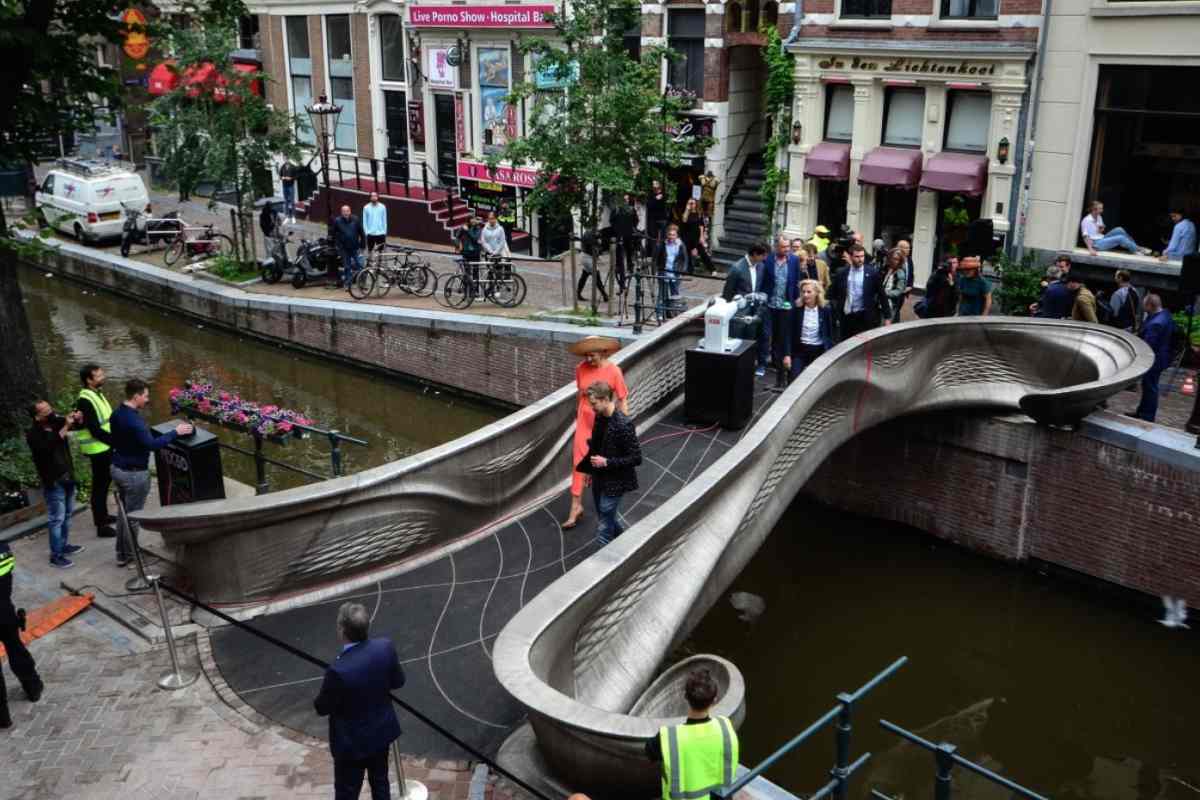It’s living science. Everyone who walks, runs or cycles across the bridge contributes to the collection of important information about the construction.
It is a striking appearance, the twelve meter long bridge that was officially opened by Queen Máxima today in the oldest district of Amsterdam. The silver-colored bridge, which features graceful curls and arches, is fully 3D printed. But that’s not even the only striking thing. The ‘smart’ bridge is equipped with ingenious sensors that continuously collect data about its own performance.
World first
The pedestrian bridge, designed by Joris Laarman, is a real world first. It is the world’s first 3D-printed steel bridge, made entirely by robotic arms. We find it in the center of Amsterdam, on the quays of the Oudezijds Achterburgwal, near the Stoofsteeg. The bridge is the result of a multidisciplinary team of experts working together on the future design of the public space. For example, the data-centric engineering (DCE) program of the Alan Turing Institute and the 3D printing company MX3D were part of the team.
The 3D printed, smart bridge. Image: Thea van den Heuvel
–
The striking pedestrian bridge could well revolutionize the way urban infrastructure is designed, built and maintained, experts argue. 3D-printed steel is a new material that could radically change the conventional way of building. Safety is a top priority here. And so the bridge is equipped with at least 100 sensors, among other things.
Sensors
These built-in sensors continuously collect data about the load on the bridge. Think of how the bridge vibrates, bends and tilts when people walk over it. Other sensors monitor the temperature and humidity to determine how much it affects the steel. The bridge is also equipped with video cameras. This ingenious ‘sensor network’ is then linked to a so-called ‘digital twin’. This is a computer model that measures the performance of the bridge in realtime monitors. It means that this digital twin can make accurate predictions about how the structure will behave when the bridge is used. So anyone walking, running or cycling across the bridge generates data that helps monitor the structure of the bridge and provides information about its use.
Maintenance
This smart technology incorporated in the bridge has several advantages. For example, the bridge can sound the alarm itself at an early stage if maintenance is required. In addition, the digital twin helps engineers understand how 3D-printed steel can be used in larger-scale and more complex construction projects.
Opening
Today, this smart and futuristic bridge is officially open to pedestrians. Queen Máxima was also present at this festive moment and was the first to use the bridge.
“We are incredibly excited about the 3D-printed bridge project,” said DCE Program Director Mark Girolami. “Not only is it a stunning design, but with the sensors built into the bridge, we are also pioneering digital twin technology. It is an important step towards a huge change in how we think about the tech world and how we can improve our built environment. It’s fantastic to see the project come to life and see the public working on it.”
–


